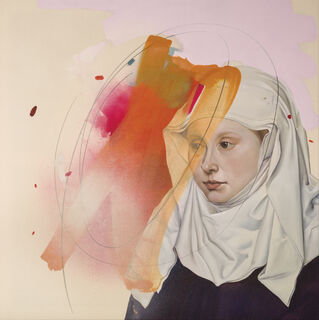Picture "Portrait after Robert Campin" (2022)


Picture "Portrait after Robert Campin" (2022)
Quick info
Acrylic, Oil, Pencil | Canvas, stretched on stretcher frame | Format 100 x 100 cm (H/W) | picture hang up | signed certificate of authenticity
Detailed description
Picture "Portrait after Robert Campin" (2022)
Portrait of a woman / 1435 "Portrait of a Woman" is the title of Robert Campin's masterpiece of 1435. The "Portrait of a Man" is preserved as a counterpart, and it is assumed that they were once the two wings of a diptych. There are no historical records of the identity of the woman depicted and no clues, such as inscriptions, coats of arms or the like on the painting itself. Robert Campin / 1375 -1444 Robert Campin was the first great master of Flemish and early Netherlandish painting. He may have studied under Jan van Eyck. His painting style is considered more realistic than anyone before him was capable of painting. Campin was one of the first to experiment with the use of oil-based paints.










